
Owner’s Operating Instruction Manual
Saito™ 4-Stroke Gasoline Engines
Model FG-20 & FG-36 | Version 2008
Warning:
• Donotmodifyanypartsoftheengine
• Thisengineisdesignedforusewithradiocontrolmodelaircraft
• Incaseofmodificationsbythecustomer,HorizonHobbyInc.shallnotbearany
responsibilityfromanydamagecausedbysuchmodification
• Keeptheignitionsystemwellmaintained
™
Distributed exclusively by
Horizon Hobby, Inc., Champaign, IL 61822
www.horizonhobby.com
© 2009
SAIMAN1LG
14387
Printed 01/09
14387 SAI FG_20andFG_36 Manual.indd 26-1 12/16/08 2:09:10 PM

Introduction
Congratulations on purchasing this
fine engine.
It has been over 20 years since Saito
introduced their first 4-stroke glow
engine, the FA-30. Since that time Saito
has led the way in the development of
powerful 4-stroke glow engines, from
the small FA-30 to the large FA-325
5-cylinder radial engine. Leading the
way in innovations, we have seen the
V-twins, and now Saito is proud to
introduce the 4-stroke gasoline-powered
engine.
Saito 4-stroke gasoline engines are
developed exclusively for model
airplanes. They are designed with
an emphasis on high performance,
durability and weight savings. Their
components are modified to adapt
to the gasoline version of existing
glow engines and are equipped with a
4-stroke gasoline engine carburetor and
ignition systems.
Remember, a properly cared for
engine will offer many years of
modeling enjoyment.
Contents Included
FG-36
Engine
Engine Mount (SAIG3695)
Ignition (SAIG36153)
Muffler (SAIG3674)
Muffler Manifold (SAIG3675)
Muffler Nut, 2 pcs (SAIG3680)
Spark Plug CM-6 (SAIG36120)
Spark Plug Wrench (SAIG36969)
Valve Adjusting Tools
Muffler Wrench
Instruction Manual
Saito Decal
FG-20
Engine
Ignition (SAIG20153)
Muffler (SAIG2074)
Muffler Manifold (SAIG2075)
Muffler Nut, 2 pcs(SAIG2080)
Spark Plug 1/4-32 (SAIG20120)
Spark Plug Wrench (FG20967)
Valve Adjusting Tools
Instruction Manual
Saito Decal
Safety Precautions
This manual describes the engine and
its general operating procedures. For
mounting and control, see the
instruction manual for the model
airplane. Some suggestions are
included in this manual for mounting
the engine using the included
motor mount.
SAFETY PRECAUTIONS 1
Features of the Gasoline
4-Stroke Engine
• Fuel efficient
• Fuel cost is low
• Aircraft stays relatively clean
during operation
Table of Contents
Introduction ........................................................................................................................ 1
Contents Included ............................................................................................................. 1
Safety Precautions ............................................................................................................ 1
Engine Mounting and Muffler Attachment Notes ....................................................... 2
Throttle Linkage ................................................................................................................ 3
Propeller ............................................................................................................................. 3
Propeller and Fuel Consumption ................................................................................... 3
Fuel ...................................................................................................................................... 4
Fuel Tank and Plumbing ................................................................................................. 4
Ignition System .................................................................................................................. 4
Spark Plug ......................................................................................................................... 5
Carburetor ......................................................................................................................... 5
Preparation Before Starting the Engine ....................................................................... 6
Starting the Engine ........................................................................................................... 6
Adjustment of the Carburetor ....................................................................................... 9
General Operating Procedures .................................................................................... 10
Normal Operation, Maintenance and Additional Information .............................. 10
Troubleshooting Guide .................................................................................................. 11
Engine Maintenance ...................................................................................................... 11
Valve/Tappet Gap Adjustment ..................................................................................... 12
Carburetor Maintenance .............................................................................................. 12
FG-20 Dimensions and Specifications ......................................................................... 16
FG-20 Parts List .............................................................................................................. 17
FG-36 Dimensions and Specifications ......................................................................... 18
FG-36 Parts List .............................................................................................................. 19
Full Parts List .................................................................................................................. 20
Consumer Warranty and Repair Policy ..................................................................... 22
VERY IMPORTANT
Failure to read and follow these instructions before you proceed to start your engine
may result in engine damage and the voiding of your warranty.
14387 SAI FG_20andFG_36 Manual.indd 2-1 12/16/08 2:09:10 PM

Note: For proper heat transfer, it is
important to use a metal motor mount
when mounting these engines in a model
aircraft.
• The engine is designed for use on
a model radio control airplane. If it is
used for any other purpose, we cannot
be responsible for its reliability
or safety.
• Always use genuine Saito parts
for replacements.
• Be sure to check the propeller before
each flight. If it is damaged, replace
the propeller with a new one.
• If the propeller hits something while
the engine is in operation, immediately
stop the engine and check for damage.
• Start the engine on a flat surface free
of stones or other debris.
• When mixing fuel, or operating the
engine, do so in a well-ventilated
area.
Engine Mounting
and Muffler
Attachment Notes
Mount the engine on aircraft-grade
plywood with more than 6mm thickness
for the FG-20 and 10mm of thickness
for the FG-36 or to a mount of
equivalent strength, and firmly fixed,
with 4 bolts. We highly recommend
the use of the Saito Motor Mount
(SAIG3695 for the FG-36 or SAIG2095
for the FG-20) to mount this engine to a
model aircraft.
Note: Be sure to use flat washers or a
metal plate on the reverse side of the
mount to prevent the bolts from
sinking into the plywood. Before
flying the airplane, be sure to check
for loose bolts.
Note: Since this engine is equipped with
a float less carburetor with a diaphragm
pump, the direction of the cylinder
and the position of the fuel tank can be
upright or inverted.
When you attach the muffler, use a
drop of oil on the threads to ease the
assembly. Screw the exhaust manifold
into the engine exhaust port and the
Figure 1
THROTTLE LINkAGE AND PROPELLER 32 ENGINE MOUNTING AND MUFFLER ATTACHMENT
muffler as far as the thread will allow
(see above drawing). Notice the use of
the two wrenches used in tightening
the two nuts on the muffler/manifold
connection. Use of threadlock is
recommended.
Remember to ensure cooling air passes
by the engine and muffler in a cowled
environment.
Throttle Linkage
Carefully attach the throttle linkage
to the engine using a ball link on the
carburetor throttle arm. Make sure the
linkage is free to operate from low
throttle to high throttle. Also, confirm
that the low throttle setting on the
transmitter closes the carburetor throttle
barrel to the low idle position. Adjust
the length of the pushrod until full
throttle opens the carburetor throttle
barrel to the fully open position, while
low throttle, low trim completely closes
the throttle barrel.
Propeller
Recommended Propeller Sizes:
The recommended propeller sizes
are shown in the table below. The use
of a carbon fiber propeller is highly
recommended. Remember that the use
of a large propeller will require care
in balancing it. Vibration will reduce
performance and can result in damage to
the engine and airframe.
For break-in, Saito recommends the use
of a smaller propeller for initial break-
in and approximately 20 subsequent
flights.
The engine produces the maximum
output when the engine is running at
about 8,300–9,000 rpm. We would
recommend using a propeller which
makes the engine run at approximately
7,000–9,500 rpm while the airplane is
in flight.
Propeller and Fuel
Consumption
In order to decrease fuel consumption
and prolong the life of the engine,
a propeller should be selected that
maximizes rpm's when the throttle is
fully open, and an airframe that will
perform flights at about 90% of the
propeller output. If the load is large, (the
diameter and pitch of the propeller is
large) the air-fuel mixture will have to
be rich. If the load is small, the rpm’s
will be high, but the fuel consumption is
lowered because the high-speed needle
valve is closed or leaned out more.
FG-20
15 x 6-10"
16 x 6-8"
17 x 6"
3 blade 15x7-9"
Diameter x Pitch (inches)
FG-36
17 x 10-13"
18 x 8-10"
19 x 8-10"
20 x 8"
Photo is of the engine
mount for the FG-36
14387 SAI FG_20andFG_36 Manual.indd 2-3 12/16/08 2:09:12 PM

Fuel
• Mix a ratio of gasoline to oil of 20:1
for break-in and continuous operation
on all engines.
• A mixture of commercial regular
gasoline and a reliable High quality
100% Synthetic oil for 2-cycle
engines must be used (we
recommend Evolution Oil,
EVOX1001Q). Unleaded high-octane
gasoline is not required for
Saito engines.
• Remember to use caution in the
storage, use and transport of gasoline.
• Since commercial gasoline has
many impurities, please be sure to use
a reliable fuel filter (SAI50109) in
your fuel system.
Note:
• Be sure to use a gasoline-resistant
type of fuel tubing (like Tygon). DO
NOT use any silicone rubber type of
fuel line to the engine or in the
fuel tank.
• The use of fuel with up to 10%
ethanol has been tested and found to
work fine.
Fuel Tank and
Plumbing
Be sure to include a reliable fuel filter
in your fuel system. The drawing above
suggests use of a fuel feed line and an
air intake line. Also, be sure to use a fuel
line compatible with gasoline.
IMPORTANT: Air is necessary to cool
the engine during operation. Make sure
that sufficient air circulation through
the cowling is provided. As a basic
reference, the outlet area should be 3
to 5 times the area of the inlet area to
provide adequate cooling.
Ignition System
Saito gasoline four-stroke engines
come with Saito’s own ignition system
composed of the ignition unit, cord for
sensor (black and white), cord for earth
to ground (green) insulated plug cap,
and cord (black and red) for connection
to a battery (not included). You will also
need to secure an on/off switch (safety
switch system). The switch must be
SPARk PLUG AND CARBURETOR 54 FUEL AND IGNITION SYSTEM
Figure 2
capacity of more than 1,000mA. Be
sure to mount the ignition system in a
location near the engine and away from
the receiver to prevent any unwanted
interference. Please refer to the
diagram below.
Spark Plug
NGK-CM6 (SAIG36120) is the
standard-equipped plug with the FG-36.
The FG-20 comes with Saito's own
1/4-32 spark plug (SAIG20120). When
needed, please replace with identical
appropriate plugs.
Carburetor
The carburetor used on gasoline four-
stroke engines are exclusive to Saito.
Since they have a negative pressure type
fuel pump, the engine can be mounted in
any position.
CAUTION: If fuel remains in the
carburetor after flight, the components
made from rubber, such as the
diaphragm, will deteriorate over time.
After a flying session, it is best to
remove any fuel remaining in the carb-
uretor by disconnecting the fuel line and
Figure 4
NGK-CM6
Spark gap = .7-.8mm (.024 - .028 in)
1/4-32
Spark gap = .4 - .5mm (.016 - .020 in)
Figure 3
14387 SAI FG_20andFG_36 Manual.indd 4-5 12/16/08 2:09:12 PM

Counter-clockwise direction
(for rich mixture)
Clockwise direction
(for lean mixture)
Clockwise direction
(for lean mixture)
Counter-clockwise direction
(for rich mixture)
High-Speed Needle Valve
Low-Speed Needle Valve
Ball-joint for linkage
Throttle lever
sure that the spark plug is screwed in
and tightened, and that the plug socket
cap is fitted in place and fastened down
properly. Fix the ignition sensor in the
proper position at the bottom of the
engine crankcase. The throttle servo
should be mounted at a distance of 8 to
12 inches from the engine. The spark
plug cable must not touch any part of
the model structure as vibration may
damage the shielded cable. If this is not
practical, it will be necessary to provide
an insulation material for the cable. The
ignition unit itself should be wrapped
in foam rubber to prevent engine
vibration from damaging the electronic
components. All components must be
protected from contact with engine
fuel. Be sure to use an on/off (Safety or
“kill”) switch to allow the ignition to be
turned off and on.
IMPORTANT: Never turn the engine
over with the ignition turned on unless
the spark plug is inserted in the plug
socket. This could lead to ignition
damage.
Note: Saito 4-stroke gasoline engines
come with a pumped carburetor. You
do not have to choke the engine as you
normally would a 2-stroke engine.
When you are ready to start the engine,
switch the ignition on and set the throttle
to a slightly high idle speed. We highly
recommend the use of an electric starter.
Be sure to have a helper hold the model
securely.
a. Turn on the transmitter first, then the
receiver and check the operation of the
throttle servo and other controls.
b. Turn on power to the ignition system.
c. Using an electric starter, begin
cranking the engine. It should fire within
seconds of applying the starter. Allow
the engine to idle for 30 to 45 seconds.
d. If the engine does not start, even after
using the electric starter to crank the
engine a second time, open the throttle
to maximum, turn off the ignition and
turn the engine over about 4 revolutions.
Switch the ignition on again and then
restart the engine with the throttle at a
fast idle position.
e. If the engine still will not start,
unscrew the spark plug and check its
Figure 5
STARTING THE ENGINE 76 BEFORE STARTING THE ENGINE
rated to a minimum 3A.
Saito recommends the use of a battery
with a voltage of 4.8V to 6V and
running the engine until it is dry.
Do not needlessly disassemble the
carburetor. If you experience problems
with the carburetor, return it to the Saito
Horizon Service Center.
Preparation Before
Starting the Engine
(prior to break-in)
• Mount the engine on a strong, flat test
bench or on the aircraft. (In either
case, the engine should be secured so
it is immobile.)
• Check to make sure the throttle
barrel will open and
close completely.
• Check the wiring of the ignition
system to make sure it is connected
correctly and securely.
• Make sure the fuel line is connected
securely to the carburetor.
• For break-in, use a fuel/oil mix ratio
of 20:1.
• FG-36: Mount an 18x8 or 19x8
carbon fiber propeller such as
a Bolly or Mejzlik. Be sure it has
been balanced. (Remember to check
the tightness after every flight.)
• FG-20: Mount a 15x6 plastic or
wood propeller. Be sure it has
been balanced. (Remember to check
the tightness after every flight.)
• It is suggested you employ a
spinner when using an electric
starter. (Remember to check the
tightness after every flight.)
• Use a tachometer to prevent over-
revving of the engine.
• Be sure to connect a gasoline-proof
line to the breather nipple to vent oil
from the airframe.
• Check the battery of the electric
starter to make sure it is fully
charged. Be sure to use a safety
on/off switch from the battery
to the ignition.
WARNING: Do not let people stand
in front of or to the side of the engine
while attempting to start it. Also, make
sure the engine test bench or aircraft is
completely secure from movement.
Starting the Engine
(assuming the engine is mounted
in an aircraft)
Saito’s carburetors come adjusted to
a basic setting. This setting should be
maintained during the initial break-in
runs. The standard carburetor settings
are as follows: The high-speed needle
valve is set to about 2 1/3 turns from
the fully closed position. The low speed
or idle needle valve is set to about 4
turns out from the fully closed position.
Please refer to the diagrams on the next
page.
Before you first start the engine, make
Low-Speed Needle Valve
High-Speed Needle Valve
Counter-clockwise direction
(for rich mixture)
Clockwise direction
(for lean mixture)
Counter-clockwise direction
(for rich mixture)
Clockwise direction
(for lean mixture)
Low-Speed Needle Valve
High-Speed Needle Valve
Counter-clockwise direction
(for rich mixture)
Clockwise direction
(for lean mixture)
Counter-clockwise direction
(for rich mixture)
Clockwise direction
(for lean mixture)
Figure 6 FG-20 CARB
FG-36 CARB
14387 SAI FG_20andFG_36 Manual.indd 6-7 12/16/08 2:09:13 PM

ADJUSTMENT OF THE CARBURETOR 98 STARTING THE ENGINE
contacts. Clean any possible excess
fuel (an indication of engine flooding)
and screw it in again. Further starting
should only be done with the throttle at
idle position. If the plug is dry, probably
not enough fuel has been drawn into
the carburetor. If that is the case, check
the fuel feed and then return to the
instructions in paragraph A.
Note: We strongly urge the use of a
tachometer to check rpm readings when
breaking in the engine.
After starting and warming the engine
for 30 to 45 seconds adjust as follows:
For initial break-in: do not exceed
4,000 rpm for the first 10 minutes of
operation. This allows all the parts to
mate properly with good lubrication.
Step I. Move the throttle to 2/3
high throttle position quickly (fast
acceleration). Repeat three times. If the
engine accelerates smoothly go to Step
III. If acceleration is not smooth, go to
Step II.
Step II. Faulty acceleration and a
tendency to quit is usually attributable
to a poor fuel mixture in the medium
rpm range. Stop the engine and recheck
the fuel feed. The fuel line must not be
pinched or broken. Restart the engine
and test acceleration again. If the
problem persists adjust the carburetor.
Open the low-speed needle by 5 minutes
and retest. If acceleration is smooth,
open the needle by another 3 to 5
minutes. This should be done because
the needle was previously set too lean.
If the engine continues to not accelerate
properly, open the low-speed needle by
10 minutes. If the engine’s operation
does not improve, shut it off and check
the basic setting, restart the engine
and test the acceleration. If the engine
continues to not accelerate properly, the
defect is likely to lie somewhere other
than an adjustment. If the engine runs
correctly, go to Step III.
Step III. If the engine accelerates
correctly, set it at idle speed and
accelerate to full speed. Repeat twice
more. If the engine functions correctly,
go to Step IV. If it cuts out, open the
low-speed needle valve by 5 to 10
minutes more. If the engine does not
respond to acceleration fast enough,
keep closing the low-speed needle until
the engine starts to cut out in response to
throttle opening. At that point, re-open
the low-speed needle by 5 to 10 minutes.
Step IV. If the engine reacts correctly,
set it at full speed. If the revolutions do
not drop, the engine has been adjusted
successfully. If the revolutions seem to
drop, open the high-speed needle by
about 5 to 10 minutes.
CAUTION: The engine must be
stopped while you adjust the carburetor
in order to prevent injury by the
propeller. Subsequent runs may be made
while slightly leaning out the mixture
with each tank full of fuel. Forty
minutes is considered sufficient time for
normal breakin prior to the first flight.
The use of a tachometer is encouraged
for setting the high-speed needle valve
prior to flight. The peak rpm should be
obtained and then reduced by 200 to 300
rpm. Over-revving of a 4-stroke engine
can cause internal damage to the engine.
Adjustment of
the Carburetor
The low-speed needle valve is set at the
factory so that idle rpm may be between
1,800 and 2,100 rpm.
In principle, a carburetor is adjusted
by first achieving highest rpm with
the high-speed needle valve and then
performing idling (low speed rpms)
with the throttle valve and the low-
speed needle valve. (Unless peak rpm
is achieved, idling adjustment will be
difficult to adjust and will not be stable.)
• After filling the tank, start the engine
and move the throttle to the fully
open position.
• Turn the main needle valve screw
clockwise (refer to Figure 5, page
7) with the carburetor adjustment bar
(provided in the accessories package)
or a small screw driver, and adjust to
achieve peak rpm. Use a tachometer
to verify rpm.
CAUTION: Over-closing the main
needle valve is very dangerous because
it may cause knocking and preignition.
It may also cause the propeller nut
to loosen. Immediately turn the main
needle counterclockwise to richen up
the setting.
• Next, close the throttle valve until
the engine operates stably and with
an idle rpm of around 1,700 rpm. Do
this by adjusting the low-speed needle
valve with the carburetor adjustment
bar (or small screwdriver) and
manipulating the throttle valve via
the throttle stick on the transmitter.
• After reaching the stable 1,700 rpm,
slowly open the throttle fully. If the
rpms become slow or go up suddenly,
adjust carefully until the changes
are smooth from idle to peak rpm, by
adjusting the low-speed needle valve.
• After the previous steps have been
accomplished, repeat the process
from idle to high rpm quickly. If the
rpms do not reach peak, but stutter as
the throttle moves from low to high,
re-tune the main needle valve and
perform the process from idling to
peak quickly.
• Repeat the process until the response
is a smooth transition from idle to
peak rpm.
Factory settings for the main and low-
speed needle valves are as follows.
• Main needle valve: Turn needle valve
all the way clockwise and then back
14387 SAI FG_20andFG_36 Manual.indd 8-9 12/16/08 2:09:13 PM

out 2 1/3 turns.
• Idle needle valve: With the throttle
barrel closed, turn the needle valve all
the way clockwise and then back out
4 turns.
• Set the throttle barrel at the fully
closed position before making any
adjustments.
General Operating
Procedures
(to ensure the long life of the engine)
• Do not operate the engine with a
“lean” mixture.
• Regularly check all screws and nuts
on both the engine and muffler.
• After 1 to 2 hours of operation,
valve adjustment may be necessary.
Adjust the valves as shown in the
Engine Maintenance and Valve/
Tappet Adjustment Sections.
• The Saito engines are
equipped with a “breather” nipple.
It is recommended that a length of
Tygon-type tubing be attached to this
crankcase breather nipple and routed
away from the engine compartment
so the excess oil can be expelled
outside of the aircraft.
Normal Operation,
Maintenance and
Additional Information
• Be sure to do a range check before
flying your model. It would be wise
to do the range check with the engine
running and without it running.
As a simple noise check, after the
engine is started, do the normal
range check your radio manufacturer
recommends. If there is no
malfunction noted, it is normal.
• Be sure to charge the ignition battery
and radio system battery before the
first flight of the day.
• To discharge the waste oil, connect
a gasoline-proof line from the
breather nipple on the crankcase and
vent it outside of the aircraft.
• Lubrication of the piston, connecting
rod, bearings and cam gear is blow-
by lubrication, in which the oil in
the fuel goes into the crankcase from
the clearance between the cylinder
and the piston. Engine life is directly
affected by the property of the fuel/
oil mix. Please use reliable oil.
• Running the engine too lean causes
heat; be sure to run the engine
slightly “rich” from peak. Running
too lean will cause “knocking”
or engine failure and has an adverse
effect on the connecting rod and the
cam gear.
• Adjustment of the tappet is
described in the “Valve/Tappet Gap
Adjustment” section.
• When attaching an exhaust
pipe to the cylinder or attaching a
propeller nut, the use of threadlock
is recommended.
• Sometimes it is helpful to tighten an
TROUBLESHOOTING GUIDE11
10 NORMAL OPERATION AND MAINTENANCE
exhaust nut, etc. when hot.
• When finished flying for the
day, be sure to remove fuel from the
carburetor and the fuel tank.
• If the engine will not be operated
for a long period of time, remove
the plug, rear cover, cylinder-head
cover, etc, clean thoroughly and re-oil.
Then assemble them in the original
condition and place in a plastic or air-
tight container.
Troubleshooting
Guide
If the engine does not start:
• Check and use a new spark plug
if needed.
• Check fuel lines.
• Check for proper mechanical
function by turning the engine over.
• Check that the carburetor is
correctly installed.
Mechanical Faults
If the engine cannot be turned over
easily:
• It is likely that the piston in the
cylinder is seized.
• Visually examine the piston and
crankcase to find the likely cause of
the engine's mechanical problem.
Engine Maintenance
Do not needlessly disassemble your
Saito single-cylinder engine.
If you must disassemble your engine,
please refer to the following steps.
• Cylinder screws should be loosened
in a crisscross pattern.
• Assemble the cam gear lining up
the timing mark at the “6 o’clock”
position. The crankshaft must be
positioned at the “12 o’clock” or
“top dead center” (TDC) position.
Refer to figure below:
• Reassemble the piston, rod, rocker
arm, pins, pushrod, tappet, etc. in
their original positions. Engine
parts are mated after running
the engine and must be
reassembled as close as possible to
their original position.
• Assemble the engine, reversing
the crisscross pattern used in the
disassembly. Prior to tightening
each of the screws, apply a drop of
oil to prevent thread damage.
• Normal engine maintenance, such
as adjusting the valves or carburetor,
is permissible without voiding the
warranty. If you have any questions
concerning maintenance
procedures, please contact the Saito
Horizon Service Center at
877-504-0233. Our technicians will
be happy to advise you on
maintenance issues.
Cam (Intake or Exhaust)
Bench Mark
14387 SAI FG_20andFG_36 Manual.indd 10-11 12/16/08 2:09:13 PM

Valve/Tappet Gap
Adjustment
After approximately one hour of
operation, tappet gap adjustment may be
necessary. When you check the valves,
lubricate the moveable parts. Also make
sure the screw is in tight before making
adjustments to valves.
Adjust the valves to a clearance of
.03mm to .10mm (.002 to .004 in) using
the supplied gauge. The valves must
be adjusted with the engine cold due to
thermal expansion.
Note: Valves must be in the compression
stroke or closed position as shown in
the following figure. When adjustment
is completed, make sure you tighten the
lock nut.
How to Adjust
Remove the plug and the rocker arm
cover and revolve the propeller slowly
clockwise by hand. The intake side
rocker arm stops, and by turning it, the
piston reaches the compression top dead
center (TDC).
In that position, adjust with the included
gauge and hexagonal wrench so tappet
gap may be set to almost zero when the
engine is in the compression stroke. If
the gauge can enter (a limit gauge with
a 0.1 mm thickness), the clearance is at
maximum and needs adjustment, adjust
between 0.03 and 0.10mm (0.002 to
0.004 in.) After the gap is checked,
tighten the locknut securely. Do not
over-tighten.
The tappet gap is the most important
factor in the maintenance of 4-stroke
engines, and operation with an excess
clearance will degrade performance.
In particular, a large gap aggravates
abrasion of the tappet and the cam and
also increases the unusual sound.
Carburetor
Maintenance
Should you experience difficulty with
the carburetor of your engine:
• Factory settings for the idle needle
valve are about 4 turns out from a fully
closed position.
• The high-speed needle valve is set to
about 2 1/3 turns out from a fully
closed position and is a good point to
start from.
Generally speaking, there are very few
things that will keep today’s modern
gasoline engines from starting. To that
end, make sure you are using good-
quality “fresh” fuel, the spark plug is
good, and the ignition system is working
properly.
Check the battery voltage to make
sure the ignition is getting the proper
voltage. Should the engine fail to start
after these items are verified, refer to the
Troubleshooting Guide on page 11.
Tappet Adjustment Adjust between
0.03 – 0.10mm (.002 in – .004 in)
Gauge
(0.1mm Max.)
Sc
r
e
w
NOTES 1312 VALVE/TAPPET GAP ADJUSTMENT
14387 SAI FG_20andFG_36 Manual.indd 12-13 12/16/08 2:09:13 PM

14 NOTES NOTES 15
14387 SAI FG_20andFG_36 Manual.indd 14-15 12/16/08 2:09:13 PM

SAITO FG-20 PARTS LIST
# deScRIPTIOn QTy # deScRIPTIOn QTy
01 Cylinder (left) 1 42 Rocker arm screw and nut (42-1,42-2) 2ea
06 Piston 1 43 Rocker arm pin 2
07 Piston pin 1 44 Rocker arm bracket (left) 1
08 Piston pin retainar 2 45 Rocker arm bracket (right) 1
09 Piston ring 1 46 Valve (in and out) (46-1, 46-2) 2
10 Connecting rod 1 47 Valve spring+Keeper+Retainer (47-1,47-2,48) 2ea
14 Cylinder screw set (14-1, 14-2, 14-3, 14-4) 1set 48 Valve retainer (Cotter) 4
15 Crankcase 1 49 Rocker arm cover 2
17 Rear cover 1 69 Intake manifold 1
19 Breather nipple 1 74 Muffler 1
20A Front bearing 1 75 Muffler manifold (75-1, 80) 1
22 Rear bearing 1 80 Muffler nut 2
23 Crankshaft 1 82-1 Carburetor complete 1set
27A Taper collet and drive flange (27-1, 27-2) 1ea
83-1
Carburetor body assembly 1set
28 Prop washer and nut (28-1,28-2) 1ea 82-1-1, 82-1-2, 82-1-3, 82-1-4, 82-1-5
31 Crankcase screw set (31-1, 31-2, 31-3) 1set
90
Carburetor screw and spring set
1set
32 Engine gasket set (32-1, 32-2, 32-3, 32-4) 1set 82-1-9, 82-1-10, 82-1-11, 82-1-12
33 Cam gear housing 1 91 Carburetor gasket set (82-1-6, 82-1-7, 82-1-8) 1set
35 Cam gear 1 93 Intake velocity stack 1
36A Cam gear shaft 1 95 Engine mount set (95-1, 95-2, 95-3, 95-4, 95-5) 1set
37 Steel and washer set (37-1, 37-2) 1set 110 Anti loosening nut 1
38 Tappet 2 149 Oil slinger 1
39 Pushrod 2 152 Screw-pin (for drive flange setting) 1
40 Pushrod cover and rubber seal (40-1, 40-2, 40-3) 2ea 153 Electronic ignition system 1set
41 Rocker arm 2 153-1, 153-2, 153-3, 153-4
16 FG-20 DIMENSIONS AND SPECIFICATIONS
OUTSIDE DIMENSIONS (mm)
SPECIFICATIONS
Disp: 20.52cc (1.25 cu in)
Bore: 31.7mm (1.24 in)
Stroke: 26mm (1.02 in)
Weight: (Engine only); 21.9 oz
(620 g)
Weight: (Muffler only): 2.9 oz
(80 g)
Weight: (Ignition only); 5.2 oz
(146 g)
Total weight with muffler and ignition
system: 30.1 oz (850 g)
Crankshaft: M8x1.25
Cylinder: AAC
Fuel Efficiency: 15cc/minute
Propeller Size: Dia. 15-16 x Pitch 6-8,
Dia. 17 x Pitch 6
Benchmark Propeller: APC 16x8W @
8,700 rpm
RPM Range: 1,700–10,000 rpm
Fuel consumption will depend on the
load of the propeller. During actual
flight, fuel consumption increases
slightly.
Electrical usage of ignition system:
Approximately 200mAh for 15
minutes.
Fuel: Gasoline-Oil mix of 20:1 (20:1
is recommended for break in and
continuous operation).
Oil: The use of only 100% synthetic
oil is such as our Evolution Oil
(EVOX1001Q)
96
119
105 127 53
70
25
605243
96
119
105 127 53
70
25
605243
FG-20 PARTS LIST 17
14387 SAI FG_20andFG_36 Manual.indd 16-17 12/16/08 2:09:14 PM

FG-36 PARTS LIST 19
SAITO FG-36 PARTS LIST
# deScRIPTIOn QTy # deScRIPTIOn QTy
01 Cylinder (left) 1 42 Rocker arm screw and nut (42-1,42-2) 2ea
06 Piston 1 43 Rocker arm pin 2
07 Piston pin 1 44 Rocker arm bracket (left) 1
08 Piston pin retainar 2 45 Rocker arm bracket (right) 1
09 Piston ring 1 46 Valve (in and out) (46-1, 46-2) 2
10 Connecting rod 1 47 Valve spring+Keeper+Retainer (47-1,47-2,48) 2ea
14 Cylinder screw set (14-1, 14-2, 14-3, 14-4) 1set 48 Valve retainer (Cotter) 4
15 Crankcase 1 49 Rocker arm cover 2
17 Rear cover 1 69 Intake manifold 1
19 Breather nipple 1 74 Muffler 1
20A Front bearing 1 75 Muffler manifold (75-1, 80) 1
22 Rear bearing 1 80 Muffler nut 2
23 Crankshaft 1 82-1 Carburetor complete 1set
27A Taper collet and drive flange (27-1, 27-2) 1ea
83-1
Carburetor body assembly 1set
28 Prop washer and nut (28-1,28-2) 1ea 82-1-1, 82-1-2, 82-1-3, 82-1-4, 82-1-5
31 Crankcase screw set (31-1, 31-2, 31-3) 1set
90
Carburetor screw and spring set
1set
32 Engine gasket set (32-1, 32-2, 32-3, 32-4) 1set 82-1-9, 82-1-10, 82-1-11, 82-1-12
33 Cam gear housing 1 91 Carburetor gasket set (82-1-6, 82-1-7, 82-1-8) 1set
35 Cam gear 1 93 Intake velocity stack 1
36A Cam gear shaft 1 95 Engine mount set (95-1, 95-2, 95-3, 95-4, 95-5) 1set
37 Steel and washer set (37-1, 37-2) 1set 110 Anti loosening nut 1
38 Tappet 2 149 Oil slinger 1
39 Pushrod 2 152 Screw-pin (for drive flange setting) 1
40 Pushrod cover and rubber seal (40-1, 40-2, 40-3) 2ea 153 Electronic ignition system 1set
41 Rocker arm 2 153-1, 153-2, 153-3, 153-4
OUTSIDE DIMENSIONS (mm)
SPECIFICATIONS
Disp: 36.3cc (2.20 cu in)
Bore: 38mm (1.49 in)
Stroke: 32mm (1.26 in)
Weight: (Engine only) 48.2 oz
(1252 g)
Weight: (Muffler only) 3.0 oz
(86 g)
Weight: (Engine Mount only) 9.6 oz
(270 g)
Weight: (Ignition only) 5.4 oz
(152 g)
Total weight with motor mount,
muffler and ignition system: 66.2 oz
(1760 g)
Crankshaft: M8x1.25
Cylinder: AAC
HP: 3.5 approximately
Fuel Efficiency: 30cc/minute
Propeller Size: Dia. 18–19 x Pitch
8–9; Dia. 20x Pitch 8
Benchmark Propeller: APC 18x6W @
8,300 rpm
RPM Range: 1,700–9,000 rpm
Fuel Consumption: Approximately
30cc/minute at full throttle and
approximately 7,500 rpm. Fuel
consumption will depend on the load
of the propeller. During actual flight,
fuel consumption increases slightly.
Electrical usage of ignition system:
Approximately 200mAh for 15
minutes.
Fuel: Gasoline-Oil mix of 20:1 (20:1
is recommended for break in and
continuous operation).
Oil: The use of only 100% synthetic
oil is such as our Evolution Oil
(EVOX1001Q)
18 FG-36 DIMENSIONS AND SPECIFICATIONS
14387 SAI FG_20andFG_36 Manual.indd 18-19 12/16/08 2:09:15 PM

FG-20 FG-36
89 Idle Needle Valve G2089 --
90 Carburetor Screw & Spring Set G2090 G3690
91 Carburetor Gasket Set G2091 G3691
93 Intake Velocity Stack -- G3693
95 Engine Mount G2095 G3695
96 Tool Set G2096 G3696
97 Instruction Manual MAN1G MAN1G
109 F-1 Fuel Filter 50109 50109
110 Anti-Loosening Nut 56110 170R3110
111 Flexible Exhaust Pipe 125A111 --
117 M4 Nut for Spinner 120S117 120S117
118 M5 Nut for Spinner 120S118 120S118
120 Spark Plug G20120 G36120
135 Prop Washer/Nut/Anti-loosening Nut 125A135 170R3135
152 Screw-Pin G36152 G36152
153 Electronic Ignition System G20153 G36153
160 Pump Assembly G20160 --
20 PARTS LIST
FG-20 FG-36
01 Cylinder, Left G2001 G3601
06 Piston 125A06 220a06
07 Piston Pin 120S07 220A07
08 Piston Pin Retainar (6 Pc) 120S08 120S08
09 Piston Ring 125A09 220A09
10 Connecting Rod 125A10 G3610
14 Cylinder Screw Set 6514 220A14
15 Crankcase G2015 G3615
17 Rear Cover G2017 220A17
19 Breather Nipple 6519 6519
20 Front Ball Bearing 120S20A 120S20A
22 Rear Ball Bearing 120S22 120S22
23 Crankshaft G2023 G3623
27 Tapered Collet & Drive Flange G2027 G3627
28 Prop Washer & Nut 125A28 170R3135
29 Prop Nut, Spinnet 120S29 120S29
30 Prop Nut, Electric Starter 120S30 120S30
31 Crankcase Screw Set 5031 5031
32 Engine Gasket Set G2032 --
33 Cam Gear Housing 170R333 300T33
35 Cam Gear, Right 6535A 120S35
36 Cam Gear Shaft 170R336A 5036A
37 Teflon/Steel Washer Set 125A37 120S37
38 Tappet (2Pc) 5038 120S38
39 Pushrod (2Pc) 90TS39 220A39
40 Pushrod Cover & Rubber Seal 325R540 220A40
41 Rocker Arm (Pr) 5041 120S41
42 Rocker Arm Screw and Nut (2 Sets) 5042 300T42
43 Rocker Arm Pin (2Pc) 5043 120S43
44 Rocker Arm Bracket, Left -- 120S44
45 Rocker Arm Bracket, Right -- 120S45
46 Valve-In/Out (Pr) 125A46 G3646
47 Valve Spring, Keeper, Retainer (2 Sets) 6547 120S47
48 Valve Retainer (4Pc) 5048 120S48
49 Rocker Arm Cover (Pr) 5049A 150S49
69 Intake Manifold, Left G2069 G3669
74 Muffler, Right G2074 G3674
75 Muffler Manifold, Standard 125A75 --
80 Muffler Nut (2Pc) 125A80 220A80
82-1 Carburetor-Complete, Left G20821 G36821
83-1 Carburetor Body Assembly, Left G20831 G36831
85 High-Speed Needle Valve 10085 --
86 High-Speed Needle Valve Extension 5086 --
87 Throttle Barrel Assembly G2087 --
88 Throttle Lever 5088B --
PARTS LIST 21
14387 SAI FG_20andFG_36 Manual.indd 20-21 12/16/08 2:09:15 PM

assembly, setup or use of the Product has been
started, you must contact Horizon directly. This
will enable Horizon to better answer your questions
and service you in the event that you may need any
assistance. For questions or assistance, please direct
your email to productsupport@horizonhobby.com,
or call 877.504.0233 toll free to speak to a service
technician.
Inspection or Repairs
If this Product needs to be inspected or repaired,
please call for a Return Merchandise Authorization
(RMA). Pack the Product securely using a shipping
carton. Please note that original boxes may be
included, but are not designed to withstand the
rigors of shipping without additional protection.
Ship via a carrier that provides tracking and
insurance for lost or damaged parcels, as Horizon is
not responsible for merchandise until it arrives and
is accepted at our facility. A Service Repair Request
is available at www.horizonhobby.com on the
“Support” tab. If you do not have internet access,
please include a letter with your complete name,
street address, email address and phone number
where you can be reached during business days,
your RMA number, a list of the included items,
method of payment for any non-warranty expenses
and a brief summary of the problem. Your original
sales receipt must also be included for warranty
consideration. Be sure your name, address, and
RMA number are clearly written on the outside of
the shipping carton.
Warranty Inspection and Repairs
To receive warranty service, you must include
your original sales receipt verifying the proof-of-
purchase date. Provided warranty conditions have
been met, your Product will be repaired or replaced
free of charge. Repair or replacement decisions are
at the sole discretion of Horizon Hobby.
Non-Warranty Repairs
Should your repair not be covered by warranty
the repair will be completed and payment will be
required without notification or estimate of the
expense unless the expense exceeds 50% of the
retail purchase cost. By submitting the item for
repair you are agreeing to payment of the repair
without notification. Repair estimates are available
upon request. You must include this request with
your repair. Non-warranty repair estimates will be
billed a minimum of ½ hour of labor. In addition
you will be billed for return freight. Please advise
us of your preferred method of payment. Horizon
accepts money orders and cashiers checks, as
well as Visa, Master Card, American Express, and
Discover cards. If you choose to pay by credit
card, please include your credit card number and
expiration date. Any repair left unpaid or unclaimed
after 90 days will be considered abandoned and
will be disposed of accordingly. Please note: non-
warranty repair is only available on electronics and
model engines.
Electronics and engines requiring inspection or
repair should be shipped to the following address:
Horizon Service Center
4105 Fieldstone Road
Champaign, Illinois 61822
All other Products requiring warranty inspection or
repair should be shipped to the following address:
Horizon Product Support
4105 Fieldstone Road
Champaign, Illinois 61822
Please call 877-504-0233 with any questions or
concerns regarding this product or warranty.
22 WARRANTY & REPAIRS
Warranty Period:
Exclusive Warranty- Horizon Hobby, Inc.,
(Horizon) warranties that the Products purchased
(the "Product") will be free from defects in
materials and workmanship for a period of 3 years
from the date of purchase by the Purchaser.
Limited Warranty
(a) This warranty is limited to the original Purchaser
("Purchaser") and is not transferable. REPAIR OR
REPLACEMENT AS PROVIDED UNDER THIS
WARRANTY IS THE EXCLUSIVE REMEDY
OF THE PURCHASER. This warranty covers
only those Products purchased from an authorized
Horizon dealer. Third party transactions are not
covered by this warranty. Proof of purchase is
required for warranty claims. Further, Horizon
reserves the right to change or modify this warranty
without notice and disclaims all other warranties,
express or implied.
(b) Limitations- HORIZON MAKES NO
WARRANTY OR REPRESENTATION, EXPRESS
OR IMPLIED, ABOUT NON-INFRINGEMENT,
MERCHANTABILITY OR FITNESS FOR A
PARTICULAR PURPOSE OF THE PRODUCT.
THE PURCHASER ACKNOWLEDGES THAT
THEY ALONE HAVE DETERMINED THAT
THE PRODUCT WILL SUITABLY MEET THE
REQUIREMENTS OF THE PURCHASER’S
INTENDED USE.
(c) Purchaser Remedy- Horizon's sole obligation
hereunder shall be that Horizon will, at its option,
(i) repair or (ii) replace, any Product determined by
Horizon to be defective. In the event of a defect,
these are the Purchaser's exclusive remedies.
Horizon reserves the right to inspect any and all
equipment involved in a warranty claim. Repair or
replacement decisions are at the sole discretion of
Horizon. This warranty does not cover cosmetic
damage or damage due to acts of God, accident,
misuse, abuse, negligence, commercial use, or
modification of or to any part of the Product. This
warranty does not cover damage due to improper
installation, operation, maintenance, or attempted
repair by anyone other than Horizon. Return of any
goods by Purchaser must be approved in writing by
Horizon before shipment.
Damage Limits:
HORIZON SHALL NOT BE LIABLE FOR
SPECIAL, INDIRECT OR CONSEQUENTIAL
DAMAGES, LOSS OF PROFITS OR
PRODUCTION OR COMMERCIAL LOSS IN
ANY WAY CONNECTED WITH THE PRODUCT,
WHETHER SUCH CLAIM IS BASED IN
CONTRACT, WARRANTY, NEGLIGENCE,
OR STRICT LIABILITY. Further, in no event
shall the liability of Horizon exceed the individual
price of the Product on which liability is asserted.
As Horizon has no control over use, setup, final
assembly, modification or misuse, no liability shall
be assumed nor accepted for any resulting damage
or injury. By the act of use, setup or assembly, the
user accepts all resulting liability.
If you as the Purchaser or user are not prepared to
accept the liability associated with the use of this
Product, you are advised to return this Product
immediately in new and unused condition to the
place of purchase.
Law: These Terms are governed by Illinois law
(without regard to conflict of law principals).
Safety Precautions:
This is a sophisticated hobby Product and not a
toy. It must be operated with caution and common
sense and requires some basic mechanical ability.
Failure to operate this Product in a safe and
responsible manner could result in injury or damage
to the Product or other property. This Product is
not intended for use by children without direct
adult supervision. The Product manual contains
instructions for safety, operation and maintenance.
It is essential to read and follow all the instructions
and warnings in the manual, prior to assembly,
setup or use, in order to operate correctly and avoid
damage or injury.
Questions, Assistance, and Repairs:
Your local hobby store and/or place of purchase
cannot provide warranty support or repair. Once
Consumer Warranty and Repair Policy
WARRANTY & REPAIRS 23
14387 SAI FG_20andFG_36 Manual.indd 22-23 12/16/08 2:09:15 PM

24 WARRANTY & REPAIRS
Consumer Warranty Registration
Complete this form and mail along with your dated sales receipt (send copy, keep original for your files)
within 10 days of purchase to: Horizon Service Center
Attn: Saito Warranty Dept.
4105 Fieldstone Road
Champaign, IL 61822
Engine Type ________________________________________________________________________
Date of Purchase _____________________________________________________________________
Owner’s Name ______________________________________________________________________
Street Address _______________________________________________________________________
City/State/Zip _______________________________________________________________________
Daytime Phone Number _______________________________________________________________
Purchased From:
Dealer’s Name _______________________________________________________________________
Street Address _______________________________________________________________________
City/State/Zip _______________________________________________________________________
✄
Please cut on dotted line.
Saito™ engines are guaranteed against
workmanship and manufacturing
defects for a period of 3 years from
the original date of purchase. This
warranty is limited to the original
purchaser of the engine and is not
transferable. Warranty repairs will
not cover:
• Normal engine wear
• Damage due to insufficient
maintenance
• Damage related to over-revving of
engine due to small prop size or
unreasonable use
• Rusted bearings
• Crash damage
• Damage due to use of improper fuel
and/or glow plug
• Damage due to lean runs, such as
rusted bearings, seized connecting
rod or piston, etc.
• Damage caused by foreign objects
(dirt or broken glow plug filaments)
• Damage caused by unreasonable
mounting or running conditions
(dust, insufficient cooling, improper
mounting, improper propeller size,
or lack of balancing, etc.)
• Damage due to improper
disassembly
• Modifications of any kind
• Repair or replacement and any
warranty coverage is Horizon's
sole decision
Consumer Warranty and Repair Policy
14387 SAI FG_20andFG_36 Manual.indd 24-25 12/16/08 2:09:15 PM
-
 1
1
-
 2
2
-
 3
3
-
 4
4
-
 5
5
-
 6
6
-
 7
7
-
 8
8
-
 9
9
-
 10
10
-
 11
11
-
 12
12
-
 13
13
-
 14
14
Ask a question and I''ll find the answer in the document
Finding information in a document is now easier with AI
Related papers
-
Saito FG-17 User manual
-
Saito FG-20 User manual
-
Saito FA-170R3-D User manual
-
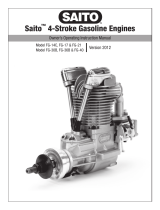 Saito Engines SAIEG21 Owner's manual
Saito Engines SAIEG21 Owner's manual
-
 Saito Engines SAIE180B Owner's manual
Saito Engines SAIE180B Owner's manual
-
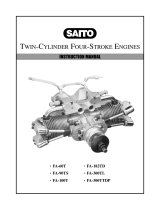 Saito Engines FA-100 Owner's manual
Saito Engines FA-100 Owner's manual
-
Saito FA-200R3 User manual
-
Saito FA-200R3 User manual
-
Saito FG-57TS Operating Instructions Manual
-
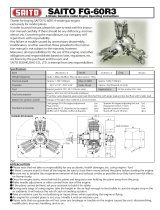 Saito Engines SAIEG60R3 Owner's manual
Saito Engines SAIEG60R3 Owner's manual
Other documents
-
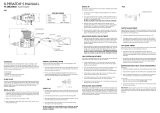 YS 140 LIMITED User manual
YS 140 LIMITED User manual
-
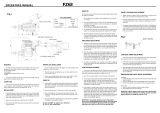 YS FZ63 User manual
YS FZ63 User manual
-
OS Engines OSMG0798 Owner's manual
-
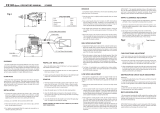 YS FZ140-SPORT User manual
YS FZ140-SPORT User manual
-
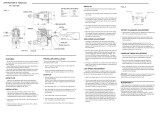 YS YS FZ110S User manual
YS YS FZ110S User manual
-
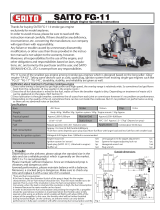 Saito Engines SAIEG11 Owner's manual
Saito Engines SAIEG11 Owner's manual
-
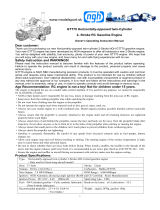 NGH GTT70 Horizontally Opposed Twin Cylinder 2 Stroke RC Gasoline Engine User manual
NGH GTT70 Horizontally Opposed Twin Cylinder 2 Stroke RC Gasoline Engine User manual
-
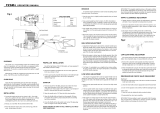 YS FZ140-2 User manual
YS FZ140-2 User manual
-
NGH GT35R 2-Stroke RC Gasoline Engines User manual
-
NGH GT35R 2-Stroke RC Gasoline Engines User manual
























